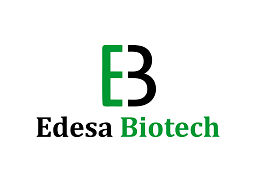预约演示
更新于:2025-05-07
EB-02
更新于:2025-05-07
概要
基本信息
非在研机构- |
最高研发阶段临床2期 |
首次获批日期- |
最高研发阶段(中国)- |
特殊审评- |
登录后查看时间轴
关联
100 项与 EB-02 相关的临床结果
登录后查看更多信息
100 项与 EB-02 相关的转化医学
登录后查看更多信息
100 项与 EB-02 相关的专利(医药)
登录后查看更多信息
6
项与 EB-02 相关的文献(医药)2025-04-01·Theriogenology
Effects of estradiol on PGF2α synthesis and corpus luteum function during early pregnancy in beef heifers
Article
作者: Feltrin, Isabella Rio ; Motta, Igor Garcia ; Ginther, Oliver Joseph ; Souza, Samuel Volpe ; Degan Mattos, Ana Clara ; Pugliesi, Guilherme ; da Silva, Amanda Guimarães ; Morelli, Karine Galhego ; Nishimura, Thiago Kan ; Castro, Thadeu
2022-05-01·Theriogenology2区 · 农林科学
Comparison of estradiol benzoate doses for resynchronization of ovulation at 14 days after timed-AI in suckled beef cows
2区 · 农林科学
Article
作者: Massoneto, João Paulo Martinelli ; Motta, Igor Garcia ; Pugliesi, Guilherme ; Ferraz, Priscila Assis ; Bruni, Gabriela Andrade ; Rocha, Cecília Constantino ; Nishimura, Thiago Kan ; Orlandi, Raphael Evangelista ; Guimarães da Silva, Amanda ; Laurindo Neto, Adomar
2020-07-03·Drug and Chemical Toxicology4区 · 医学
Ebselen oxide attenuates mechlorethamine dermatotoxicity in the mouse ear vesicant model
4区 · 医学
Article
作者: Pino, Maria A. ; Piętka-Ottlik, Magdalena ; Billack, Blase ; Tumu, Hemanta C. Rao ; Cuffari, Benedette J. ; Palus, Jerzy
1
项与 EB-02 相关的新闻(医药)2024-07-01
·药融圈
原料药、中间体、药用辅料、药用包材和制药设备是药品研发生产的重要组成部分,也是关系国计民生、经济发展和国家安全的战略性产业。近年来,国家政策鼓励我国医药工业向创新驱动转型,并加快实现高质量发展。原辅包设作为医药工业的重要组成部分,需要加快解决产业链供应、技术创新、制造水平、国际化等方面的问题,补齐技术装备短板,实现绿色低碳转型,迎接复杂且深刻的行业变化。
展馆介绍
第六届CMC-China博览会特设制药产业链馆(E馆),汇聚国内外优质原料药、中间体、药用辅料生产/代理机构、医药包装、制药生产设备、实验室工程等优质供应商,展示最新、最前沿的技术、产品和专业实力。
届时,馆内将举办口服固体缓控释制剂大会、国际原料药供应链对接会、中国药用辅料大会、绿色制药技术大会、2024年中国药品代理商董事长年会、IPO原料药掌门人说、原料药企业家年会、医药全渠道营销与新药商业化落地策略等专业论坛。融合主流热门剂型,探讨技术要点,汇集医药行业巨头,链接制剂上下游,精准对接需求。
展商推荐
展位:E-B02
浙江荣耀生物科技股份有限公司
荣耀生物主要从事兽药原料药及制剂、医药原料药及中间体的研发、生产、销售,产品90%远销海内外。在陈仁尔的执掌下,企业持续开展科技创新,不断加大研发投入,连续5次通过美国FDA认证,4次通过农业部兽药GMP认证,获得国家高新技术企业、浙江省科技型中小企业、浙江省专精特新中小企业、中国外贸出口先导指数样本企业等荣誉,建立了省级企业研究院、省级中小企业技术中心、国家级博士后工作站(分站)等科研平台,并先后与中科院、浙江大学等高校、研究院建立长期的产学研合作关系。
展位:E-D06
台州普渡机械设备有限公司
台州普渡机械设备有限公司是连续化学制药制造工程解决方案供应商,国家高新技术企业,省级科技型企业,市级研发中心。
目前在台州拥有12000㎡先进设备制造基地及整套完善的质量检测管理体系,还有符合GMP标准的洁净实验室、连续流实验室、工艺开发实验室;并在湖北,甘肃,郑州,杭州等地建立了连续流中试基地和联合实验室。
公司坚持以科技创新为核心,研发团队由同济大学流体博士、浙江大学化学工艺博士、上海应用技术大学安全专家等组成,并在上海同济大学及上海应用技术大学建立联合实验室,为项目研制提供全方位理论分析、数值仿真、工艺安全风险评估、爆炸当量检测、项目分析和系列化布局等支持。
展位:E-E06
新天地药业股份有限公司
河南新天地药业股份有限公司位于河南省长葛经济技术开发区,成立于2005年,注册资金1亿元。主要从事医药中间体和原料药的研发、生产与销售,是全球重要的阿莫西林合成侧链——左旋对羟基苯甘氨酸生产企业,牵头或参与制定了左旋对羟基苯甘氨酸、对甲苯磺酸及左旋对羟基苯甘氨酸甲酯等多个产品的行业标准,是河南省第二批专精特新企业。
展位:E-F13
尚科生物医药(上海)有限公司
尚科生物医药(上海)有限公司成立于2007年底,现已成为集生物催化和合成生物学技术研发、医药中间体和原料药生产、药品制剂生产三位一体的产业链闭环企业。尚科生物凭借四大技术平台,开发了超50个酶系的酶库及辅酶系列产品(包括NMN、NAD、NADP、NADH、NADPH、FMN、FAD、PAPS等)。尚科生物的主营业务包括:生物酶的开发与应用,医药中间体、原料药和功能化学品、药品制剂的开发与生产和销售;生物酶、医药中间体、原料药、药品制剂的CRO/CDMO服务。
展位:E-B03
山东四环药业股份有限公司
山东天铭医药集团有限公司是一家从事药物及保健品研发、生产和销售的国家高新技术企业,注册成立于2010年。旗下现有两个研发中心,三个生产基地,分别是山东天铭医药科技有限公司(山东济南市研发中心)、南京天铭医药科技有限公司(江苏南京市研发中心)、山东四环药业股份有限公司(山东德州市平原县生产基地)、济宁市天铭药业有限公司(山东济宁市邹城市生产基地)、广西天铭药业有限公司(广西河池市生产基地)。
公司产品涉及的领域涵盖心血管用药及其中间体(沙库巴曲及其中间体)、糖尿病用药及其中间体(阿格列汀、利格列汀、达格列净、恩格列净等)、抗肿瘤用药及其中间体(依鲁替尼、奥西替尼等)、保健产品及其中间体(NMN、PQQ等)、抗炎抗病毒产品及其中间体(巴瑞替尼、巴洛沙韦酯、甲磺酸萘莫司他等)、抗生素药物及其中间体(头孢甲肟、头孢西酮、头孢匹林等)。
展位:E-C01-2
鲁南贝特制药有限公司
鲁南制药集团是集中药、化学药品、生物制品的生产、科研、销售于一体的综合制药集团。现有3个产品研发中心和一支1400人的研发团队,博士40人,硕士800人,拥有3个cGMP生产基地,生产设备使用GLATT、IMA、GEA、BOSCH、楚天、东富龙等国内外一线品牌,自动化程度高,生产管理核心团队具有15年以上生产和质量的管理经验,能够保证研发和生产的产品质量。 生产场地通过美国FDA、欧洲GMP、日本PMDA、巴西 ANVISA、墨西哥COFEPRIS、印度尼西亚卫生部等认证,可同时满足全球多个国家的注册申报。原料品种多,制剂管线丰富,国内平台登记的原料有141个,正在研发和申报的原料项目有100余个,已经通过GMP检查的制剂生产线有42条。
展位:E-E05-1
中山致安化工科技有限公司
中山致安化工科技有限公司微反应器及合成技术专注研究源于2017年,是一家有化工合成经验的换代微反技术创新公司,所有装备的设计都是为适应化学合成而设计,整合国内科学院领先前沿装备及制造技术,得到专业医药化工研发工程团队合作支援,致力打造3D打印高压耐腐微反应器、高通量碳化硅微反应器、线性流量恒流计量泵、工业化微反技术四大服务,为客户提供任意规格的反应器、、微反成套技术上门服务。中山微反愿为解决化工绿色低成本、轻松合成而奋斗,努力成为中国微反行业的领先者。
展位:E-E05-2
浙江车头制药股份有限公司
浙江车头制药股份有限公司成立于1989年,是一家集研发、生产、销售和服务于一体的国家高新技术企业,主要生产核苷类抗病毒、消炎解热镇痛、心血管等系列药物及关键中间体,是全球重要的萘普生(钠)、阿昔洛韦原料药及中间体的研发、生产基地。公司主要产品已通过美国、欧盟、加拿大、俄罗斯、巴西、韩国、日本、印度等多个国家和地区的注册认证,85%以上的产品出口欧美等高端市场,在全球及国内细分领域占据主要份额。
展位:E-E08-1
菲立化学工程(遂昌)有限公司
菲立化学工程(遂昌)有限公司于2018年成立,为浙江省高新技术企业和专精特新企业。专业从事研发、生产和销售微通道反应机组、全自动压力过滤器、气动阀、固定(流化)床反应器、中高压恒流泵、管式反应器及各种智控系统。公司具有全流程研发能力,可为化工企业的安全环保生产提供一站式解决方案。
公司现有专利25项、包括发明专利8项(含日本、印度专利)、实用新型专利16项、外观设计专利6项。
公司设有博士后工作站,拥有多名博士作为主要的技术骨干,负责公司研发中心运行。研究连续化工艺的开发、设备设计制作、工程化设计安装。有丰富的理论知识和实践经验,完成了硝化、重氮化、氢化、氯化、氟化、氧化等多个项目的产业化。
公司坚持工业化的理念,以绿色化工为指导方针,为精细化工等行业提供先进安全的绿色化学技术转化,新型化工解决方案及最新智能企业管理系统。
展位:E-F12
常州瑞明药业有限公司
常州瑞明药业有限公司成立于2005年,2020年并购安徽美致诚药业有限公司,多次通过欧、美、日、中(EMA、FDA、PMDA等)现场审计,通过率100%,经验丰富,可实现原料药中外双报。
瑞明总部占地2.5万平米,设有200L-3000L反应釜,产量可达500吨/年,两条洁净区生产线,稳定生产,质量体系完善,销售稳定,打造原料-制剂-销售一体化。
安徽分部占地5万平方米,生产空间富余。目前总反应体积为240立方米,总产能1000吨/年。生产空间富余,拟建四条洁净区生产线,诚邀项目合作,制剂生产、MAH合作可按需建设。
展位:E-A03
湖北亨迪药业股份有限公司
湖北亨迪药业股份有限公司(股票代码:301211.SZ),始创于1995年,是中国领先的CDMO服务企业和特色原料药生产企业。公司目前拥有2个省级技术平台,2个生产基地,2021-2023连续三年被评为中国CDM020强企业。
亨迪药业自2002年来开始承接CDMO业务,20年来向全球跨国药企和新药研创公司提供委托研发和委托生产服务。能够为全球客户提供从新药临床前药学研究、临床及各阶段原料药工艺研发和生产、到商业化生产的一站式服务,其中包括多个中美双报项目。亨迪药业位于省级化学原料药园区,先后多次通过美国FDA、欧盟、中国等官方的GMP审计,有世界一流的质量保证体系和质量管理团队:公司建有国内领先的EHS体系,拥有废水3000吨/天、废气(VOC)10万方/天处理能力,并多次通过赛诺菲、强生、武田等跨国公司客户的EHS审计。亨迪药业国际一流的质量和EHS体系,为客户的研发和生产项目提供了可持续性的保障。亨迪药业总反应能力约1000立方,涵盖多个0EB4-5高活性GMP生产线,反应釜体积5L~5000L能承接从克、公斤、吨、百吨、千吨等不同规模的小分子原料药及中间体的合同研发与生产业务。荆门总部新产线和武汉江夏基地都将于2023年底-2024年初陆续投入使用。
展位:E-A04
天津市捷安凯医药有限公司
天津市捷安凯医药有限公司,是一家按照GSP标准管理和运营的企业。成立20年来,公司始终专注于医药产品进口。捷安凯凭借专业的技术团队、多年积累的行业经验和国外优质的渠道和资源,在化学原料药进口,仿制药关联申报,参比制剂进口等领域为国内客户提供专业化的产品和服务。
展位:E-B04-1
浙江仰业精密设备有限公司
浙江仰业精密设备有限公司是一家致力于研发、生产、销售无菌锤式粉碎机、锥式粉碎机、破块粉碎整粒一体机、钉盘粉碎机、气流粉碎机、高剪切力混合机、真空上料机、破块机、UHT灭菌机等制药、食品、化工设备的厂家。公司不仅提供优质的产品和粉体系统、液体系统的整体解决方案,还提供专业化的售前技术咨询以及完善的售后服务。本着“愿为人类健康奉献优质设备”的宗旨,严格按照GMP要求研发和生产具有国际先进水平的制药、食品、化工粉体、液体设备。公司引进国外先进技术并掌握核心技术,拥有自主知识产权。公司产品已申请并获得多项认证,并于2019年4月份获得浙江科技型中小企业认定,于2019年12月份获得国家高新企业认定。彰显了公司在制药粉体设备技术核心竞争力!
展位:E-C03-1
上海麦克林生化科技股份有限公司
上海麦克林生化科技股份有限公司是一家高端研发用试剂产品的制造商与供应商,旨在为全球科技事业和工业领域客户提供系统的产品资源及配套技术服务。
麦克林成立于2013年,公司总部设在上海浦东。
麦克林凭着一支富有创造天赋的专业团队,新技术、新产品层出不穷,产品已达180000 多种,并呈持续增长态势,产品包括通用试剂、药物合成试剂、手性化合物、催化剂及配体、分析试剂、生物试剂等。麦克林的柔性生产线能够快速提供小批量、多品种的产品,可以满足实验室研发、中试乃至规模化生产需要。
麦克林作为中国科技产业的民族品牌,其产品在市场上备受认可。
展位:E-F01
山东川成医药有限公司
山东川成医药有限公司,是一家集医药研发、中试、生产、销售和技术服务于一体的高标准原料药企业,产品和技术涵盖抗肿瘤、抗过敏、心脑血管、神经中枢等医疗用药领域,系聊城市重点建设项目。公司占地5.33万㎡,总投资3.97亿元,其中一期建设投资1.5亿元,于2020年4月份建成投产,以原料药和高端医药中间体生产为主。
公司已建成技术先进、性能卓越的合成、分析、环保、微生物和质量控制五大实验室,配有各类色谱仪、光谱仪、ICP-MS等世界先进的精密仪器,可实现对研发、生产和环保等全程检测监控,确保产品质量和环保安全;已建立健全并采用ERP系统和数据审计追踪系统,能够满足国内外客户的审计需求。目前,已拥有发明专利13项、成熟生产技术20余项。
展位:E-F02
山东明康产业园管理有限公司
明康原料药创新孵化园位于山东省菏泽市鄄城化工产业园区(雷泽大道东、临泽路西、人民街北、城阳街南),总占地453.46亩,总建筑计容面积约28万平方米。建有质检研发中心、中央罐区、公用污水处理中心和公用管网路网以及24套生产单元。
明康原料药创新孵化园,精准对接国内优秀的原料药研发公司,以引进、孵化、推动原料药产业化为目标,打造配套齐全、管理规范、国内最优的高端原料药和高级医药中间体公共生产平台。用专业的设计建设、完备的公用配套,来满足研发公司的低成本创业需求。
展位:E-F04
广西华诺医药科技有限公司
华诺医药科技有限公司是一家以药物化学和有机化学为基础,集小分子药物和核酸药物核心原料研发、生产和技术服务于一体的创新型企业,服务领域包括分子砌块生产销售、定制合成及工艺研发。公司由海归博导担任公司首席科学家,并邀请数名行业顶尖专家组成顾问团,已与国内数家高校联合建立科研实验室。
作为一家以新药研发为首任、以技术创新为中心的科技公司,我们立足中华医药健康产业发展和变革的机遇,积极布局核心技术,坚持创新发展,强化自身资源配置,加强国际合作,努力成为中华医药健康产业的引领者。
展位:E-F06
山东诚汇医药集团有限公司
山东诚汇医药集团有限公司是一家专注于医药原料药、中间体、精细化工产品研发、生产、销售及服务一体的高新技术企业,可承接高端医药中间体、新型农化类中间体、宠物药等兽药类中间体、大健康类跨界产品及中间体定制与服务。
集团现拥有1个研发中心-山东诚创蓝海医药科技有限公司,1个原料药厂-山东诚汇双达药业有限公司及两个医药中间体生产基地,现有职工1000余人,研发团队300余人。
公司研发与制造的产品领域涵盖了局麻类用药、抗病毒类用药、心脑血管系统用药、抗肿瘤类用药、消化道类用药、降糖类用药、兽药等产品品类,产品远销世界各地达70余个国家和地区。
展位:E-F07
神隆医药(常熟)有限公司
始建于2009年,为隶属于统一集团的台湾神隆股份有限公司的全资子公司;公司位于江苏省苏州市常熟经济开发区内,占地100亩。厂内拥有API研发中心和cGMP工厂,先后通过FDA,NMPA,PMDA及墨西哥官方检查;具备出色的研发能力,丰富的学名药及CDMO项目开发经验;生产中心设有大中小型车间,反应体积1~10,000L;共七条产线,其中有三条产线可生产具有细胞毒的高活性化合物;公司面向国内客户开展战略合作,助力客户对中国以及全球制剂市场的开发。
展位:E-G01
宁阳靖泰生化有限公司
工厂位于山东泰安宁阳县化工园区,占地 28 亩,搪瓷/不锈钢多功能反应设备 30 余台,蒸汽,冷冻、烘干、制氮设备,尾气吸收等配套设施一应俱全,并配备气相、液相等常规检测仪器,擅长:氯代、溴代、氧化等反应,与齐鲁制药、恒瑞医药、Hetero 等国内外药企建立稳定供应关系。交通位置便利,距离曲阜东高铁站车程 30分钟。
展位:E-G03
湖南先施制药有限公司
湖南先施制药有限公司成立于2021年05月20日,注册资本6000万元,是一家专注于优质医药产品推广、研发、生产的综合性制药企业,公司秉持以研发为基础,以产业需求为导向的发展战略,致力于成为推动中国制药工业发展的新力量。
展位:E-G05
山西阳和药业有限公司
山西阳和药业有限公司成立于2017年,坐落于山西省大同市阳高县龙泉工业园区。公司注册资本5100万元,总占地面积100亩。阳和药业作为化学原料药的商业化生产基地,专业从事特色化学原料药的研发、生产、销售。公司现拥有多条原料药生产线,产品涉及呼吸系统、消化系统等多个领域。目前公司可大批量生产乙酰半胱氨酸、间苯三酚、间苯三酚三甲醚、聚乙烯醇等原料药。
展位:E-G11
上海彼特化工有限公司
上海彼特化工位于陆家嘴自由贸易试验区,主营原料药、化工原料出口,同时基于中印合作实验室与工厂承接CRO与CDMO业务,已形成研发-生产-贸易一条龙业务主体。彼特化工拥有丰富的国际市场推广经验与紧密合作伙伴,在全球主要市场拥有稳定可靠的合作关系,同时公司注重质量管理及信用管理,已通过ISO9001,且多次获得“重合同守信用”企业称号。彼特化工与国内众多原料药生产企业及主要新材料企业都保持着长期稳定的合作,在供货周期、价格与服务上均有优势。
展位:E-G13
安庆沃德化工有限公司
安徽海康药业有限责任公司成立于2009年,是一家生产抗病毒、抗肿瘤、降糖、抗过敏等高端原料药的高新技术企业,公司前身在浙江拥有20多年抗病毒、糖尿病和抗肿瘤等原料药生产经验。公司注册资金2250万元,注册地址安徽省安庆市大观区环城西路21号。
公司总部坐落于古城安庆,总部员工100多人,占地面积28000㎡,建筑面积将近3万平方,拥有GMP标准的自动化原料药生产车间,并配套有完善的安全环保设施和质量管理体系;南京分公司(瑄宇医药)位于南京江北新区新材料产业园,以打造原料药研发全程一站式CRO服务平台为目标,以总部生产基地为依托,专注于原料药品种的研发和申报,同时承接其他公司原料药生产注册委托开发业务。在建的安庆中试研发基地占地面积6000余平方米,以创新药、改良药、中间体以及高活性公斤级原料药为核心研发生产领域,提供一站式CDMO服务。
展位:E-C07-1
艾立康药业股份有限公司
艾立康药业股份有限公司,是一家致力于成为全球领先的研发驱动型创新科技企业,专注于小分子化学药物的开发及商业化。公司在浙江海宁、江苏南京、安徽安庆分别建有三个研发中心,产品管线覆盖肿瘤、自身免疫、心脑血管、神经系统等领域。
展位:E-A02-1-A
上海梓梦科技有限公司
上海梓梦科技有限公司是一家专注于医药分析仪器的高新技术企业,主营产品有ZML310外用制剂粒度分析仪、德国耐驰流变分析仪、贴剂晶体出现率分析仪、喷雾激光粒度仪、纳米粒度及zeta电位分析仪、显微计数法不溶性微粒仪、澄清度和可见异物检查伞棚灯、微流图像粒度仪、半固体标准制样器、透皮实验用巴马香猪猪皮和羊蹄甲及牛蹄甲等。
展位:E-A02-1-B
济宁为民制药有限公司
济宁为民制药有限公司是一家专注于呼吸系统药品和皮肤系统药品的生产企业。定量气雾剂、泡沫气雾剂、喷雾剂是我公司的重点特色剂型,其它剂型还包括外用溶液剂、滴耳剂、滴鼻剂等。公司现拥有车间面积5000余㎡,现有定量气雾剂生产线2条,泡沫气雾剂生产线1条,鼻喷雾剂生产线1条,外用喷雾剂生产线1条,外用溶液剂生产线2条。为民制药秉承“质量第一,以项目为中心”的服务理念,追求为客户提供专业、高效、省心的品质服务。期待与您合作共赢!
展位:E-A02-1
上海卡乐康包衣技术有限公司
卡乐康公司是全球制药行业薄膜包衣系统、缓控释技术和多功能药用辅料的开发、供应和技术支持的领导者。我们致力于提供优质的药用辅料产品和特色的增值服务,为固体口服制剂的设计、开发和生产提供全程支持。我们专注于市场问题及技术开发,可靠的产品质量、完善的技术支持、广泛的法规协助以及多方位供应能力为卡乐康赢得了全球可信赖的制药供应商的美誉。卡乐康拥有11个生产基 地,全球25个技术服务实验室,和专门致力于客户服务的1400多名员工。
展位:E-A05
吉林天衡药业有限公司
吉林天衡药业有限公司成立于2019年12月,是以研发为驱动力,集研发、定制生产为一体的“一站式”CDMO服务企业。天衡药业下辖科创中心、生产中心,以药品研发+生产全产业链布局,同时积极对接国内优秀的医药营销企业,组织建设完整的医药健康产业生态圈。
展位:E-C06-1
华北制药股份有限公司
华北制药股份有限公司(证券代码:600812),其前身华北制药厂是新中国“一五”计划期间的重点建设项目,1953年筹建,1958年投产,被称为“共和国医药长子”。 她的建成投产翻开了新中国抗生素批量生产的新篇章,彻底结束新中国青、链霉素依赖进口的紧张局面,为改变我国缺医少药局面作出了重要贡献。
华北制药新制剂分厂是华北制药股份有限公司分公司,是华北制药最大的化学药物制剂生产基地。总投资26亿元,占地面积330亩,于2011年11月建成并具备投产条件。新制剂分厂拥有1个研发中心,2大生产厂区,共5个生产车间。厂区严格按照FDA-cGMP、EU-GMP和中国新版GMP标准设计建设,采用世界一流的现代化制药装备,拥有专业的团队和完善的质量体系。被授予国家药品监督管理局高级研修学院的现场教学基地和智能制造试点示范单位 。
委托生产作为华北制药新制剂分厂主要对外合作业务之一,可生产剂型涵盖冻干粉针剂、无菌粉针剂、小容量注射剂、滴眼剂、片剂、硬胶囊剂、软胶囊剂、颗粒剂、口服溶液等。自2017年至今,已承接40余个委托生产品种,并协助MAH陆续完成注册申报等工作,实现商业化生产。
展位:E-C06-2
宜春万申智能装备股份有限公司
宜春万申智能装备股份有限公司成立于2010年9月,是专注于制药、食品等大健康产业装备及信息系统研发、制造、销售、服务于一体的国家高新技术企业,下设固体制剂事业部、粉体事业部、自控及信息化事业部,拥有93000平米的现代化产业基地,为全球客户提供固体制剂、原料药、粉体处理自动化产线及数字化工厂整体解决方案,已服务于国内众多知名企业并出口欧美、独联体、中东、东南亚等全球40余个国家和地区。公司始终坚持创新驱动发展,致力成为国际一流大健康产业装备集团。
展位:E-C07-2
北京中硕医药科技开发有限公司
北京中硕医药科技开发有限公司(以下简称“北京中硕医药”)成立于 2001年 2 月,前身是国药集团国药工业的全资子公司。北京中硕医药是一家以化学药物研发为核心,专业从事化学原料药、医药中间体、制剂的研发、生产、销售和技术转让等服务的高科技企业。北京中硕医药在北京设有销售公司及 3000m²研发中心,拥有超百人的研发团队,包含药物合成、药物分析、药物制剂三大平台。在山西省建有合作生产工厂,原料药中间体产能为百吨级/年。
展位:E-F05
上海药坦药物研究开发有限公司
上海药坦药物研究开发有限公司成立于2019年10月。位于上海市浦东新区张江科学城,是国家认定的高新技术企业、上海市专精特新企业,浦东新区企业研发机构,上海市企业技术中心。公司已经完成过亿元A轮融资,投资方包括弘晖基金、毅达资本等知名投资机构。是一家专注于为国内外制药公司提供仿制药和创新药的药学研究(CRO)及生产(CDMO)服务的企业,服务范围涵盖原料药和制剂的工艺开发、质量研究、注册申报以及在GMP条件下临床样品供应和商业化生产。重点布局慢性肾病领域,建立了多糖铁复合物技术平台,开发了多个高门槛的铁剂仿制药品种,市场爆发在际。
展位:E-G07
江苏长流医药设备有限公司
江苏长留医疗设备有限公司是一家专业生产和经营第二、第三类医疗器械的企业。企业具有生产、销售、进出口代理等业务。同时具有各类医疗器械、医疗卫生专业用品研发技术;环境监测设备制造;实验室工程设计、建设等能力。公司是一家长期致力研发生物安全柜、环保监测试验、制药专用设备的专业科技企业。具有独立的法人资格。公司拥有一支专业配置合理的高素质科技队伍。长年与科技院校沟通、合作不断进行技术创新。为用户提供及时、适用、人性、安全的产品。在智能控制、安全等领域均有开创性突破。多项专利均在审批中。公司拥有完善的质量管理体系。并严格按照质量体系的要求规范企业的运营活动。拥有完备的检测、检验设备和专业的检测检验人员。产品质量能到根本的保证。
当前制药产业链馆(E馆)仅剩少量展示席位
期待提供(包括但不限于)以下产品/服务的企业咨询设展:
原料药API/中间体
抗过敏类,抗血栓类,抗氧化类,胃溃疡类,抗病毒类,解热镇痛类,心血管类,精神障碍类,神经系统类,头孢类中间体,氨基酸保护剂系列,维生素类中间体,喹诺酮类药物中间体,抗癫痫药物中间体,含氟吡啶类中间体,甾类医药中间体等等
药用辅料
淀粉类,糖类,微晶纤维素,无机盐类,蒸馏水,乙醇,淀粉浆,羟丙基纤维素,甲基纤维素,羟丙甲纤维素,羧甲基淀粉钠,低取代羟丙基纤维素,交联聚乙烯比咯烷酮,交联羧甲基纤维素钠,泡腾崩解剂,硬脂酸镁,聚乙二醇类,月桂醇硫酸镁,微粉硅胶,滑石粉,氢化植物油等等
药用包材
药用胶塞,药用玻璃瓶,预灌封注射器,中硼硅玻璃管,PTP铝箔,PVC硬片,塑料复合硬片/复合膜(袋),塑料输液瓶(袋),固体/液体药用塑料瓶,塑料滴眼剂瓶,软膏管,气雾剂喷雾阀门,安瓿,玻璃滴眼剂瓶,抗生素瓶铝(含金铝)盖,输液瓶铝(含金铝)/铝塑组合盖,口服液瓶铝(含金铝)/铝塑组合盖等等
制药设备
原料药机械及设备,制剂机械,药用粉碎机械,饮片机械,制药用水设备,药品包装设备,药用检测设备,连续流技术等等
合作咨询
CMC博览会福利官15301612029
2024年8月15-16日,苏州国际博览中心,期待与您相约第六届CMC-China博览会,与15,000+参会观众一道,把握行业风向,探寻发展路径!
同期论坛
点击查看
IPO原料药掌门人说/原料药企业家年会
绿色制药技术大会:催化剂&连续流
2024年中国药品代理商董事长年会
口服固体缓控释制剂大会
国际原料药供应链对接会
中国药用辅料大会
医药全渠道营销与新药商业化落地
IPO
100 项与 EB-02 相关的药物交易
登录后查看更多信息
研发状态
10 条进展最快的记录, 后查看更多信息
登录
| 适应症 | 最高研发状态 | 国家/地区 | 公司 | 日期 |
|---|---|---|---|---|
| 痔疮 | 临床2期 | 加拿大 | 2023-10-08 |
登录后查看更多信息
临床结果
临床结果
适应症
分期
评价
查看全部结果
| 研究 | 分期 | 人群特征 | 评价人数 | 分组 | 结果 | 评价 | 发布日期 |
|---|
No Data | |||||||
登录后查看更多信息
转化医学
使用我们的转化医学数据加速您的研究。
登录
或

药物交易
使用我们的药物交易数据加速您的研究。
登录
或

核心专利
使用我们的核心专利数据促进您的研究。
登录
或

临床分析
紧跟全球注册中心的最新临床试验。
登录
或

批准
利用最新的监管批准信息加速您的研究。
登录
或

特殊审评
只需点击几下即可了解关键药物信息。
登录
或

生物医药百科问答
全新生物医药AI Agent 覆盖科研全链路,让突破性发现快人一步
立即开始免费试用!
智慧芽新药情报库是智慧芽专为生命科学人士构建的基于AI的创新药情报平台,助您全方位提升您的研发与决策效率。
立即开始数据试用!
智慧芽新药库数据也通过智慧芽数据服务平台,以API或者数据包形式对外开放,助您更加充分利用智慧芽新药情报信息。
生物序列数据库
生物药研发创新
免费使用
化学结构数据库
小分子化药研发创新
免费使用

